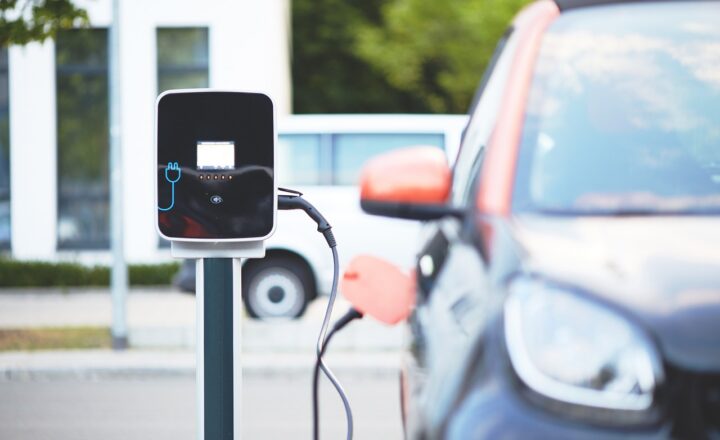Electric Boats and Ferries: The Future of Marine Transportation
November 15, 2024

In the quest for sustainable and environmentally friendly alternatives to traditional fuels, the maritime industry is undergoing a significant transformation. Electric boats and ferries, once considered a niche segment, are now emerging as a viable solution to reduce greenhouse gas emissions and improve urban air quality. This article delves into the advantages, challenges, and technological advancements surrounding electric marine transportation, highlighting why this innovation represents the future of the industry.
1. Understanding Electric Marine Transportation
Electric boats and ferries use electric motors powered by batteries or fuel cells instead of conventional diesel engines. This electric propulsion system offers numerous benefits, including:
- Reduced Emissions: Electric vessels emit no tailpipe emissions, contributing significantly to cleaner air and reduced greenhouse gases in our atmosphere.
- Lower Operating Costs: With fewer moving parts than internal combustion engines, electric motors require less maintenance and incur lower operating costs over time.
- Quieter Operations: Electric boats operate much quieter than their gasoline counterparts, leading to less noise pollution, particularly in urban waterways and sensitive ecosystems.
This shift towards electrification is supported by regulations aimed at reducing emissions and the growing demand for sustainable transport options in cities around the world.
2. Advantages of Electric Ferries
Electric ferries are revolutionizing passenger and freight transportation across waterways. Some notable advantages include:
A. Environmental Benefits
The reliance on clean energy makes electric ferries a green alternative, protecting marine life and ecosystems while significantly reducing air pollutants.
B. Cost Efficiency
Although initial investment costs can be high, the ongoing savings from lower fuel consumption (electricity is cheaper than diesel) and reduced maintenance costs make electric ferries economically appealing.
C. Enhanced Passenger Experience
With quiet engines and smoother rides, electric ferries provide a more comfortable and enjoyable experience for passengers. They contribute to the overall tourism experience and leisure boating atmosphere, further encouraging eco-friendly habits.
3. Challenges Facing Electric Marine Transportation
Despite the advantages, electric marine transportation faces challenges that must be addressed:
- Limited Range: Electric boats have a restricted range compared to conventional vessels due to battery capacity limits, making them less suitable for long-distance travel without additional charging infrastructure in place.
- Charging Infrastructure: Unlike gas stations, charging stations for electric boats and ferries are still sparse, presenting a challenge for operators looking to implement fully electric fleets.
- High Initial Costs: The upfront costs of electric vessels can be substantial, particularly for larger ferries, which can be a deterrent for operators working with tight budgets.
Addressing these challenges requires collaboration among governments, private sectors, and technology developers to invest in infrastructure and innovative solutions.
4. Technological Advances in Electric Marine Propulsion
Advancements in technology are making electric marine transportation more feasible:
A. Battery Technology
Innovations in battery technology, including lithium-ion and solid-state batteries, are increasing energy density and reducing charging times. New batteries can last longer and charge faster, enhancing the practicality of electric yachts and ferries.
B. Renewable Energy Integration
Many electric boats now incorporate renewable energy sources, using solar panels for auxiliary power, thereby improving operational sustainability while reducing dependence on traditional networks.
5. Case Studies: Electric Ferries Around the World
Several regions are already implementing electric ferries, showcasing the feasibility and benefits of this technology:
- Norway: Norway has an ambitious goal to electrify its ferry fleet by 2026, with flagship vessels already operating on various routes, significantly reducing emissions and demonstrating effective public transportation alternatives.
- Seattle, USA: The city has launched battery-electric ferries, aiming to cut operating costs while providing passengers with a smoother and quieter ride across the waters of Puget Sound.
- British Columbia, Canada: BC Ferries operates one of the largest electric ferry fleets in the world, servicing various routes while contributing to the province’s sustainability goals.
These examples illustrate the global shift towards electric maritime transport and are setting precedents for further investments in this burgeoning sector.
6. The Future of Electric Marine Transportation
As technology continues to evolve and political pressure increases for sustainable practices, we can expect:
- Expansion of Electric Fleets: More cities and countries will launch initiatives to transition traditional ferries and boats to electric alternatives, focusing on urban centers with significant waterway traffic.
- Innovative Solutions: Technologies such as hydrogen fuel cells, hybrid systems, and automated vessels will become more commonplace, revolutionizing the future of maritime transport.
- Increased Public Awareness: As consumers become more environmentally conscious, the demand for sustainable transport solutions like electric ferries will grow, pushing industries to adapt accordingly.
In summary, electric boats and ferries represent not just a trend, but a critical approach towards enhancing maritime transportation. By investing in this technology and supporting integrated initiatives, stakeholder collaboration can accelerate the adoption of electric vessels across the globe, leading us towards a more sustainable future for marine transportation.
Conclusion
The transition to electric boats and ferries is not just about embracing greener alternatives; it is about revolutionizing the way we approach marine transportation. By recognizing the enormous potential and addressing the current challenges, we can pave the way for a more sustainable, efficient, and accessible marine transportation system that meets the needs of future generations. By collaborating and committing resources towards overcoming obstacles, electric marine vessels will become the backbone of sustainable aquatic travel.







